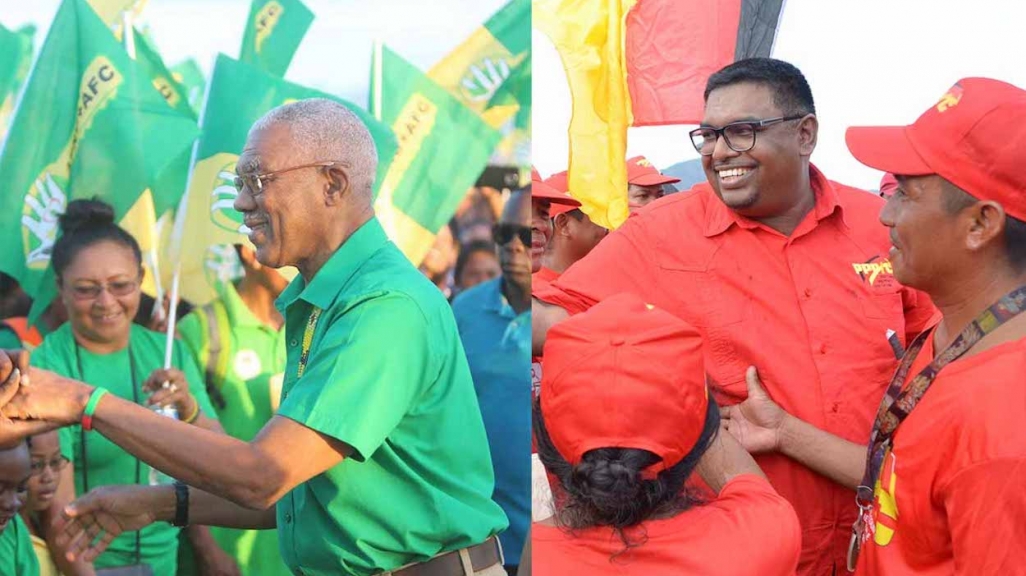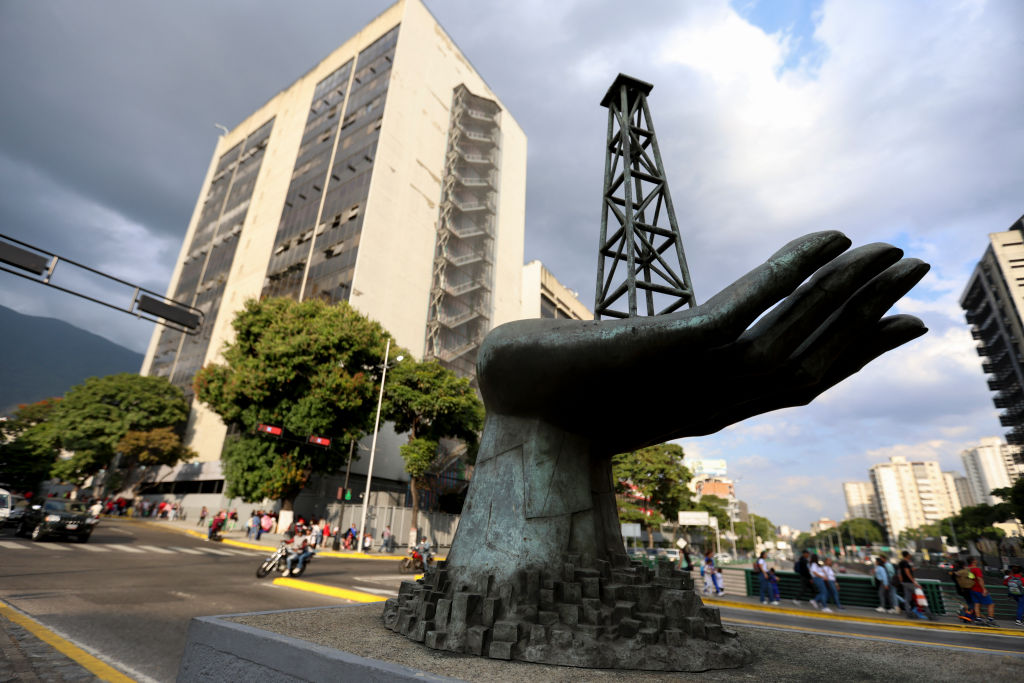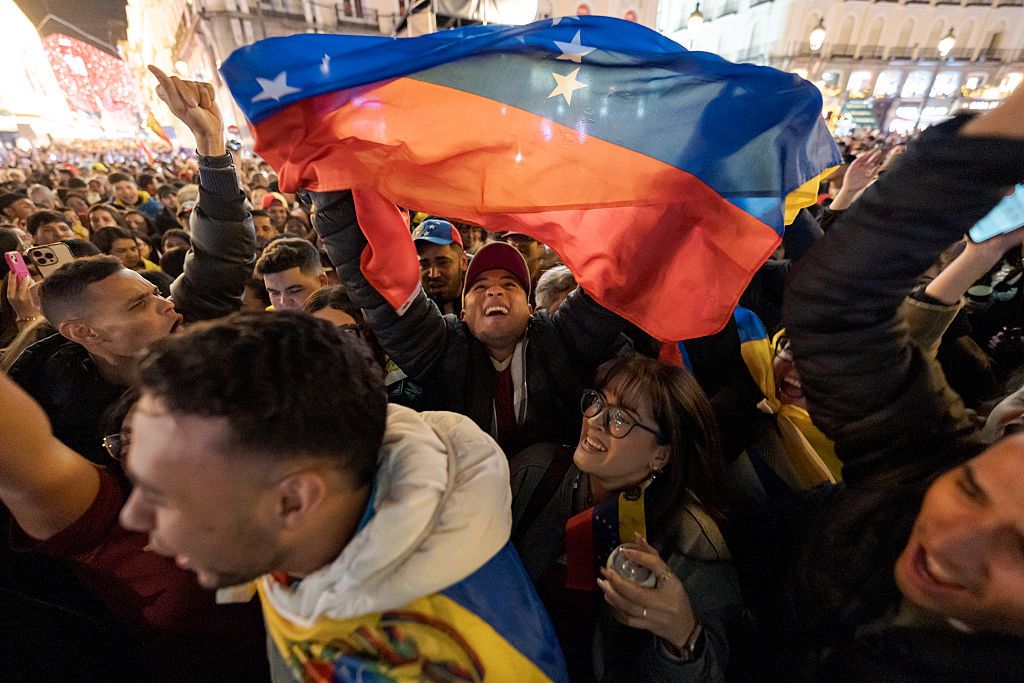On the Verge of Historic Economic Expansion, Guyana Heads to the Polls
On the Verge of Historic Economic Expansion, Guyana Heads to the Polls
Beyond the candidates’ names, one issue will be on the ballot on March 2: oil.
On March 2, Guyanese head to the polls to elect 65 members of parliament to five-year terms in the country’s unicameral National Assembly. The general and regional elections are happening six months earlier than originally scheduled after current President David Granger’s government lost a no-confidence vote in December 2018.
The presidential candidate of the party or coalition that receives the most votes nationally becomes president. That person in turn appoints the country’s prime minister. A total of nine parties are fielding presidential tickets, and parties must receive at least 5,000 votes nationally to gain a seat in Congress.
The current legislature features just two coalitions: David Granger’s governing A Partnership for National Unity-Alliance for Change (APNU-AFC) with 33 seats and the opposition People’s Progressive Party/Civic (PPP/C) with 32. The APNU-AFC traditionally represents the country’s Afro-Guyanese and multiracial populations, which account for about 30 and 20 percent of the population, respectively. The PPP/C, on the other hand, typically is supported by the country’s Indo-Guyanese population, or about 40 percent of the population.
Twenty-five legislators will be elected from the country’s 10 regions, and 40 from national lists. One-third of the nominated candidates must be women. Voting is not mandatory, but voter registration for all adults 18 and over is. Turnout in the last three parliamentary elections hovered around 70 percent. Members of Guyana’s armed forces, law enforcement agencies, and diplomatic corps voted early on February 21.
Oil, oil, oil
2020 is set to be a game-changing year for Guyana. On February 20, the country shipped out its first-ever barrels of crude oil, after the initial major discovery of the Stabroek Block in May 2015, still the largest discovery in the world in the last five years. The offshore fields are estimated to hold more than 8 billion barrels, which would generate close to $30 billion in revenues by 2030 and close to $170 billion over the lifetime of the project.
ExxonMobil, which is managing the deep-water Stabroek Block via consortium, says initial oil production is 120,000 barrels per day (bpd), with an expected capacity of 750,000 bpd by 2025. (Disclosue: Exxon Mobil Corporation is a Council of the Americas member.) Rystad Energy, an independent research firm, estimates production could hit up to 1.2 million bpd by the decade’s end. The oil major holds 45 percent of the Liza prospect, with the Hess Corp. holding another 30 percent, and the Chinese firm CNOOC (formerly Nexen) with the remaining 25 percent. ExxonMobil’s total portfolio in 2018 topped out at 3.8 million oil-equivalent bpd.
This year, Guyana is set to receive just under $300 million from the sale of the oil—or 52 percent of revenues from recovered resources—per a 50-year lease agreement signed with ExxonMobil in 2016. A 2018 IMF report described the terms of that contract as “relatively favorable to investors by international standards” and recommended that Guyana’s government rewrite its tax laws to pull in a larger portion of profits. The IMF projects the country’s GDP to shoot up 86 percent in 2020, and per capita income to double to about $10,000 per year, which would put it in between Argentina and Mexico’s 2018 per capita incomes. Oil and gas companies invested just over $8 billion in exploration and development activities in the country from 2015 to 2019. Guyana’s 2018 GDP was just under $4 billion. ExxonMobil reports that more than 1,700 Guyanese have worked on its operations in the country of 780,000, amounting to roughly 1 in every 500 people.
The boom comes as neighboring Venezuela’s storied oil industry is trying to stave off collapse. OPEC reported that, in January 2020, Venezuela produced 730,000 bpd, less than one quarter of its peak two decades ago. Ecuador, the Western Hemisphere’s only other OPEC member, produced 540,000 bpd in January.
The incumbent
David Granger of the APNU is running for reelection with MP and Security Minister Khemraj Ramjattan, who hails from the AFC, as his running mate and candidate for prime minister. Granger, a retired army captain, won the 2015 race by just 1.2 percent, ending the PPP/C’s 23-year run in power. Guyana’s per capita income was the third lowest in Latin America and the Caribbean when Granger came into office in 2015. During his term, it’s risen five spots among the 39 countries in the region, per the latest figures from the World Bank.
Granger, 74, has made oil sector development and growth prospects the cornerstone of his reelection bid. “We need five more years to develop this country. I declared December 20, 2019, National Petroleum Day, to let Guyanese know they will never be poor again. The oil wealth belongs to you, and this government will make sure it goes to the people who need it most,” he said, referring to the first day of oil production, at his campaign launch in January.
In early 2019, the National Assembly approved legislation that established the framework for a sovereign wealth fund, called the National Resource Fund, to manage the oil revenues. Both the Caribbean Development Bank and the IMF welcomed the action as a way to guard Guyana against the so-called “resource curse,” though the latter also urged the government to enhance the framework to avoid fiscal deficits and promote more efficient and transparent management.
Polling in Guyana is limited, but a June 2019 from a Barbados-based firm put Granger’s approval rating at 50 percent nationwide, with 36 percent disapproval.
The challenger
Though his party has criticized Granger for the terms of the ExxonMobil deal, opposition presidential candidate Irfaan Ali, 39, pledges to keep the deal intact, calling the oil major’s investment a “pioneering” one. That said, he says he will hold companies that might want to do business in the future to scrutiny.
Though he’s been around for years, Ali is still somewhat of an opaque figure. He was just 28 years old when he was named Guyana’s housing and water minister in 2009, making him the youngest member of the cabinet of then-President Bharrat Jagdeo (1999–2011). He stayed on in the cabinet for seven years, into the administration of Donald Ramotar (2011–2015), eventually adding the title of tourism, industry, and commerce minister to his portfolio. He faces 19 charges of fraud for allegedly awarding $830,000 worth of housing lots to Jagdeo, five of his fellow cabinet members, and other officials during his tenure as housing minister. His trial is scheduled to continue on March 24. There is legal debate over whether the president enjoys immunity from prosecution for actions while in office, as Jagdeo has claimed over his involvement in the scandal, though the constitutional article in question does say that no criminal proceedings can be continued against a sitting president for actions taken as a private citizen.
Many in Guyana see the rather nondescript Ali as a stand-in for Jagdeo, who is term-limited. It is commonly believed that Jagdeo also worked from behind the scenes during his successor and party-mate Ramotar’s term (2011–2015), though both insist that Ramotar was the one calling the shots.
This campaign season, Jagdeo is again a frequent public face for the PPP/C, at times making more media appearances and more public proclamations on party policy than the candidate himself. The doubts about Ali’s qualifications and capabilities to serve as president are only fueled by the fact that media outlets can’t seem to verify Ali’s claims of his undergraduate academic credentials. Two private citizens have even filed a legal request for documents pertaining to Ali’s credentials—with Jagdeo.
The wild card
With Guyanese politics, especially Congress, so evenly split between the APNU-AFC and PPP/C factions, 2020 could be a year in which Guyana’s indigenous and Amerindian peoples—who make up 10 percent of the population—and in particular their village chiefs could wield substantial influence in the eventual governing coalition. Lennox Shuman, a popular chief running for a seat in parliament who has been in talks with Granger, is in favor of renegotiating the ExxonMobil contract.









